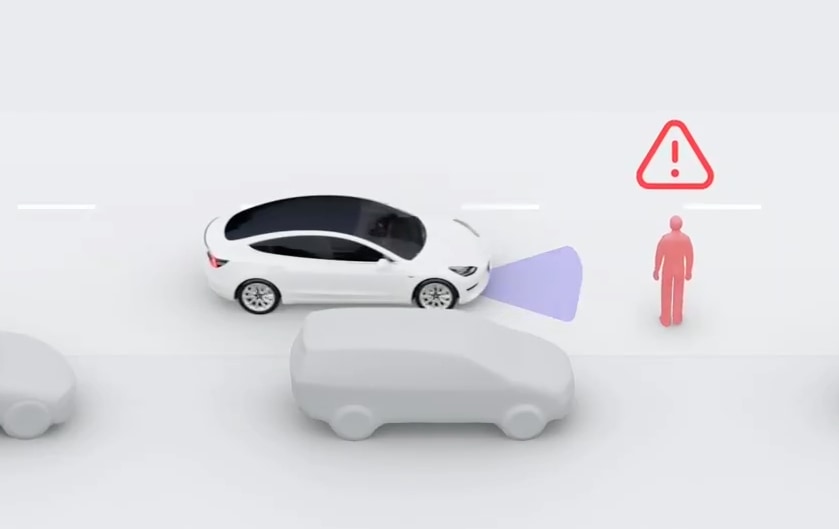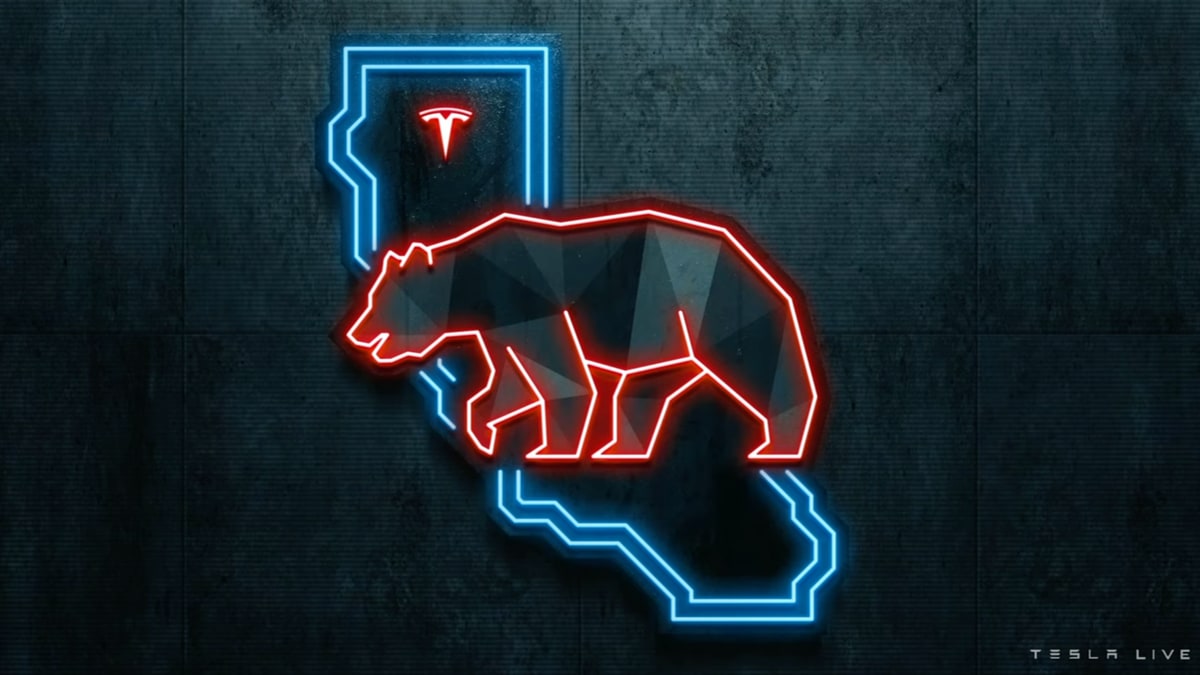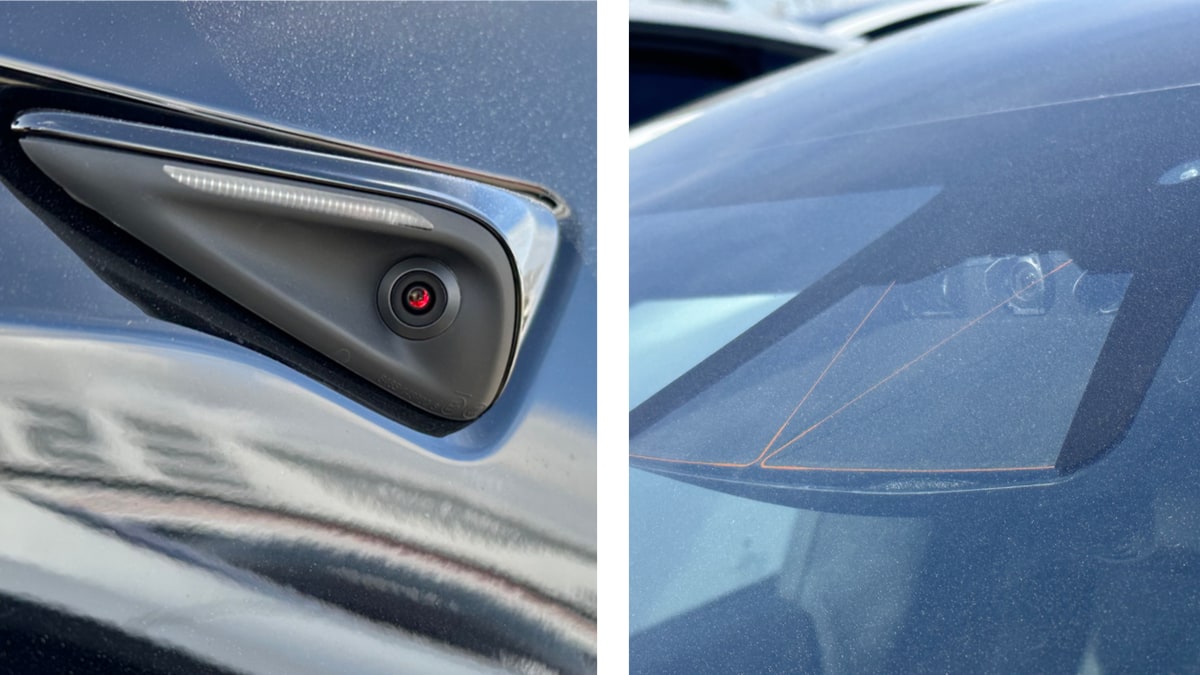By Kevin Armstrong

Tesla is introducing improvements to its Automatic Emergency Braking (AEB) system that goes beyond the standard AEB functionality. This new system includes the ability to detect and respond to vehicles that are not only in front of the car but ones that cross the car's path.
AEB is an important safety feature that can help reduce the risk of accidents and save road life. The system uses sensors and cameras to monitor the road ahead and identify potential obstacles, including other vehicles, pedestrians, and objects. When the system detects that a collision is about to occur, it will warn the driver with visual and/or audible alerts. If the driver does not respond, it will apply the brakes automatically to slow down or stop the vehicle.
How Tesla is Advancing AEB
Tesla's improvements to Automatic Emergency Braking system go beyond the standard AEB functionality, adding the ability to detect and react to vehicles that cross the car's path or "steals the right of way," such as a vehicle that runs a red light or cuts off the Tesla. According to Tesla, nearly half of the collisions of this nature would be avoided with this newly expanded system. From Tesla's release notes in the upcoming FSD Beta v11.3, Tesla states:
Expanded Automatic Emergency Braking (AEB) to handle vehicles that cross ego's path. This includes cases where other vehicles run their red light or turn across ego's path, stealing the right-of-way. Replay of previous collisions of this type suggests that 49% of the events would be mitigated by the new behavior. This improvement is now active in both manual driving and autopilot operation.
While the latest update has not gone out to the public, we have seen countless examples of Teslas already reacting to vehicles that turn in front of or swerve in front of them.
History of AEB
Automatic Emergency Braking is a safety technology that has been around since the mid-2000s and has become an increasingly common feature in newer vehicles. AEB is also known by other names, such as Collision Mitigation Braking System (CMBS) on Honda vehicles and Active Brake Assist on Mercedes-Benz vehicles. Bosch and Volvo were among the early pioneers in the field.
Bosch introduced its Predictive Safety System in 2006, and Volvo launched its City Safety system in 2008. Since then, many other car manufacturers and technology companies have developed their AEB systems, incorporating a range of sensors, algorithms, and machine learning techniques to improve the accuracy and effectiveness of the technology.
Learnings From FSD Beta
The AEB advancement is listed in the most recent FSD Beta release notes, v11.3. However, the upgraded system will respond in FSD or with all Autopilot features off. This is a significant safety advancement that Tesla will be providing, free of charge, during the next major over-the-air update for FSD Beta users.
Tesla is clearly taking everything it's learning from FSD Beta and its improved vision system and applying it to other areas, much like how it introduced Auto Cancel turn signals. With Auto Cancel Turn Signals, Tesla learned when to turn off your turn signal with its FSD Beta progress, and now you have the option to let the vehicle to turn off your turn signal for you after switching lanes
Improved AEB for All?
FSD Beta currently remains on a separate track from Tesla's other updates, which means not everyone will get the improvements to AEB, at least initially. Given Tesla's history with safety features, we expect that Tesla will eventually add this feature to non-FSD Beta builds or merge FSD and non-FSD builds so that all owners have access to the improved Automatic Emergency Braking.
It's already been shown that Teslas on Autopilot are ten times safer than human drivers and 2.5 times safer with Autopilot disengaged. It's due to features like this that continue to make the safest car on the planet even safer.
By Lennon Cihak

Tesla CEO Elon Musk and California governor Gavin Newsom have announced a new global engineering headquarters in California.
In the opening remarks, Musk mentioned it’s a bit of a poetic transition from the company that founded Silicon Valley, Hewlett Packard, to now Tesla. Musk also said that Tesla’s Fremont factory is expected to manufacture 600,000 vehicles in 2023, if all goes well.
Newsom briefly discusses California’s growth over the last few years and how he’s proud to partner with Tesla to continue pioneering innovation and modern day engineering.
“California is the largest manufacturing state—people forget that,” Governor Gavin Newsom explained. “[...] now the fourth largest economy in the world. Eat your heart out, Germany.
“I couldn’t be more proud of California’s commitment to support Tesla over the course of the last few decades,” Newsom adds. “It’s demonstrable in terms of policy; in terms of direction, more broadly. Interestingly, regulation, dare I say, for all its good and evil, depending on which side of it you’re on, but the regulatory framework accelerated investment.”
Elon Musk Announces Tesla's New Engineering HQ
California Engineering HQ"Remarks by Gov. Newsom/Elon Musk https://t.co/DMoY7TYK5O
— Tesla (@Tesla) February 22, 2023
The new office space, which was previously the headquarters for Hewlett Packard, is located in Palo Alto, the city of Tesla’s previous headquarters. After Musk’s debacle with Alameda County’s handling of the COVID-19 response, Musk moved Tesla’s headquarters to Austin, Texas. At the time, Tesla was focusing on its Gigafactory in Austin as well as the Cybertruck.
Despite Musk’s rocky past with California, Tesla continues to invest in California heavily. The state recently surpassed Germany in terms of the strongest world economy. California is also Tesla’s strongest market for electric vehicles.
Tesla has Gigafactories located in multiple parts of the world, including Sparks, Nevada; Berlin, Germany; Buffalo, New York; and Shanghai, China.
By Kevin Armstrong

We have a confirmed spotting of Tesla’s Hardware 4.0 (HW4). Tesla super hacker @greentheonly validated a finding by Twitter user @klwtts. The Kilowatts posted photos of new vehicles in Tesla’s Fremont parking lot. The photos showed a Tesla with updated cameras, which GeenTheOnly later confirmed are part of HW4.
No New Cameras in HW4
A week ago, Greentheonly posted a widely viewed thread by pulling apart a new HW4 computer and showing a detailed breakdown. What got the most attention was the number of camera ports. Three additional spots are added for a total of 12, with one marked as a spare. It was believed the new cameras will be used in the front bumper. However, the Kilowatts' discovery contradicted this finding because no new cameras were found on the Teslas that were confirmed to have HW4.
One of our sources has confirmed that HW4 will in fact not include any new cameras as previously suspected. They say HW4 will include the same number of cameras as HW3 has today. The extra ports on HW4 will apparently go unused, at least for now. It's not clear whether this means they will be used in another vehicle such as the Cybertruck, or if Tesla will release hardware 4.5 in the future that may include additional cameras in the front bumper.
No Changes to Existing Camera Placement
While our source confirmed that HW4 will include an HD radar and updated cameras as expected, they also confirmed that camera placements were going to stay the same as HW3.
The photos by the Kilowatts provided insight into what to expect with the new HW4 cars. Model S and Model X images showed the side repeater cameras have new housing and appear to be pointed more outward instead of straight back with the current version. This positioning could cut down the blindspot noted in an excellent video by Mike Hoffman of CyberOwners last year.
It was believed that the forward-facing camera system would be reduced to two after leaked images showed the reduction. However, the front camera housing on these new vehicles appears to still feature three front-facing cameras.
Tesla has its Investor Day event coming up on March 1st, where we expect they will talk more about hardware 4.0.
Bagikan Berita Ini














0 Response to "Tesla Improves Automatic Emergency Braking With Update - Not a Tesla App"
Post a Comment